.jpg) Also known as reduction mammaplasty, breast reduction surgery removes excess breast fat, glandular tissue and skin to achieve a breast size in proportion with your body and to alleviate the discomfort associated with overly large breasts.
Also known as reduction mammaplasty, breast reduction surgery removes excess breast fat, glandular tissue and skin to achieve a breast size in proportion with your body and to alleviate the discomfort associated with overly large breasts.
This site features many tools to assist you in your search for plastic surgery information, including breast reduction videos, stories from real patients discussing their experiences with breast reduction surgery, and breast reduction before and after photos of patients who had their procedures performed by ASPS Member Surgeons.
Enhancing your appearance with breast reduction surgery
Overly large breasts can cause some women to have both health and emotional problems. In addition to self image issues, you may also experience physical pain and discomfort.
The weight of excess breast tissue can impair your ability to lead an active life. The emotional discomfort and self-consciousness often associated with having large pendulous breasts is as important an issue to many women as the physical discomfort and pain.
Also known as reduction mammaplasty, breast reduction surgery removes excess breast fat, glandular tissue and skin to achieve a breast size in proportion with your body and to alleviate the discomfort associated with overly large breasts. Pictures of breast reduction procedures performed by ASPS Member Surgeons may help you in the decision-making process.
Is it right for me?
Breast reduction surgery is a highly individualized procedure and you should do it for yourself, not to fulfill someone else’s desires or to try to fit any sort of ideal image.
Breast reduction is a good option for you if:
- You are physically healthy
- You have realistic expectations
- You don’t smoke
- You are bothered by the feeling that your breasts are too large
- Your breasts limit your physical activity
- You experience back, neck and shoulder pain caused by the weight of your breasts
- You have regular indentations from bra straps that support heavy, pendulous breasts
- You have skin irritation beneath the breast crease
- Your breasts hang low and have stretched skin
- Your nipples rest below the breast crease when your breasts are unsupported
- You have enlarged areolas caused by stretched skin
The success and safety of your breast reduction procedure depends very much on your complete candidness during your consultation. You’ll be asked a number of questions about your health, desires and lifestyle.
.jpg) Be prepared to discuss:
Be prepared to discuss:
- Why you want the surgery, your expectations and desired outcome
- Medical conditions, drug allergies and medical treatments
- Use of current medications, vitamins, herbal supplements, alcohol, tobacco and drugs
- Previous surgeries
- Family history of breast cancer and results of any mammograms or previous biopsies
Your surgeon may also:
- Evaluate your general health status and any pre-existing health conditions or risk factors
- Examine your breasts, and may take detailed measurements of their size and shape, skin quality, placement of your nipples and areolas
- Take photographs for your medical record
- Discuss your options and recommend a course of treatment
- Discuss likely outcomes of your breast reduction procedure and any risks or potential complications
- Discuss the use of anesthesia during your procedure for breast reduction.
.jpg) After researching the basics about breast reduction, many patients want to know what to expect before breast reduction surgery.
After researching the basics about breast reduction, many patients want to know what to expect before breast reduction surgery.
Prior to surgery, you may be asked to:
- Get lab testing or a medical evaluation
- Take certain medications or adjust your current medications
- Get a baseline mammogram before surgery and another one after surgery to help detect any future changes in your breast tissue
- Stop smoking well in advance of breast reduction surgery
- Avoid taking aspirin, anti-inflammatory drugs and herbal supplements as they can increase bleeding
Special instructions you receive will cover:
- What to do on the day of surgery
- Post-operative care and follow-up
Your plastic surgeon will also discuss where your procedure will be performed. Breast reduction surgery may be performed in an accredited office-based surgical center, outpatient/ambulatory surgical center, or a hospital.
You’ll need help
If your breast reduction procedure is performed on an outpatient basis, be sure to arrange for someone to drive you to and from surgery and to stay with you for at least the first night following surgery.
What happens during breast reduction surgery?
Breast reduction surgery is usually performed through incisions on your breasts with surgical removal of the excess fat, glandular tissue and skin.
In some cases, excess fat may be removed through liposuction in conjunction with the excision techniques described below. If breast size is largely due to fatty tissue and excess skin is not a factor, liposuction alone may be used in the procedure for breast reduction.
The technique used to reduce the size of your breasts will be determined by your individual condition, breast composition, amount of reduction desired, your personal preferences and the surgeon’s advice.
Step 1 – Anesthesia
Medications are administered for your comfort during breast reduction surgery. The choices include intravenous sedation and general anesthesia. Your doctor will recommend the best choice for you.
Step 2 – The incision
Incision options include:
- A circular pattern around the areola
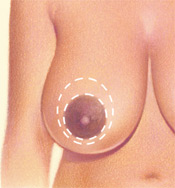

The incision lines that remain are visible and permanent scars, although usually well concealed beneath a swimsuit or bra.
- A keyhole or racquet-shaped pattern with an incision around the areola and vertically down to the breast crease
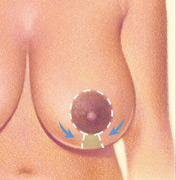
.jpg)
- An inverted T or anchor-shaped incision pattern
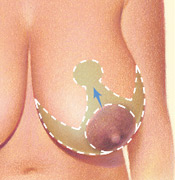
.jpg)
Step 3 – Removing tissue and repositioning
After the incision is made, the nipple-which remains tethered to its original blood and nerve supply-is then repositioned. The areola is reduced by excising skin at the perimeter, if necessary.
Underlying breast tissue is reduced, lifted and shaped. Occasionally, for extremely large pendulous breasts, the nipple and areola may need to be removed and transplanted to a higher position on the breast (free nipple graft).
Step 4 – Closing the incisions
The incisions are brought together to reshape the now smaller breast. Sutures are layered deep within the breast tissue to create and support the newly shaped breasts; sutures, skin adhesives and/or surgical tape close the skin. Incision lines are permanent, but in most cases will fade and significantly improve over time.
Step 5 – See the results
The results of your breast reduction surgery are immediately visible. Over time, post-surgical swelling will resolve and incision lines will fade. Satisfaction with your new image should continue to grow as you recover.
The decision to have breast reduction surgery is extremely personal. You will have to decide if the benefits will achieve your goals and if the risks of breast reduction surgery and potential complications are acceptable.
Your plastic surgeon and/or plastic surgery staff will explain in detail the risks associated with surgery. You will be asked to sign consent forms to ensure that you fully understand the procedure you will undergo and any risks or potential complications.
The risks of breast reduction and breast reduction complications include:
- Unfavorable scarring
- Infection
- Changes in nipple or breast sensation, which may be temporary or permanent
- Anesthesia risks
- Bleeding (hematoma)
- Blood clots
- Poor wound healing
- Breast contour and shape irregularities
- Skin discoloration, permanent pigmentation changes, swelling and bruising
- Damage to deeper structures – such as nerves, blood vessels, muscles, and lungs – can occur and may be temporary or permanent
- Breast asymmetry
- Fluid accumulation
- Excessive firmness of the breast
- Potential inability to breastfeed
- Potential loss of skin/tissue of breast where incisions meet each other
- Potential partial or total loss of nipple and areola
- Deep vein thrombosis, cardiac and pulmonary complications
- Pain, which may persist
- Allergies to tape, suture materials and glues, blood products, topical preparations or injectable agents.
- Fatty tissue deep in the skin could die (fat necrosis)
- Possibility of revisional surgery
You should know that:
- Breast reduction surgery can interfere with certain diagnostic procedures
- Breast and nipple piercing can cause an infection
- Your ability to breastfeed following reduction mammaplasty may be limited; talk to your doctor if you are planning to nurse a baby
- The breast reduction procedure can be performed at any age, but is best done when your breasts are fully developed
- Changes in the breasts during pregnancy can alter the outcomes of previous breast reduction surgery, as can significant weight fluctuations
The practice of medicine and surgery is not an exact science. Although good results are expected, there is no guarantee. In some situations, it may not be possible to achieve optimal results with a single breast reduction procedure and another surgery may be necessary.
Where will my surgery be performed?
Breast reduction procedures may be performed in your plastic surgeon’s accredited office-based surgical facility, an ambulatory surgical facility or a hospital. Your plastic surgeon and the assisting staff will fully attend to your comfort and safety.
When you go home
If you experience shortness of breath, chest pains, or unusual heart beats, seek medical attention immediately. Should any of these breast reduction complications occur, you may require hospitalization and additional treatment.
The practice of medicine and surgery is not an exact science. Although good results are expected, there is no guarantee. In some situations, it may not be possible to achieve optimal results with a single surgical procedures and another surgery may be necessary.
Be careful
Following your physician’s instructions is key to the success of your surgery. It is important that the surgical incisions are not subjected to excessive force, abrasion, or motion during the time of healing. Your doctor will give you specific instructions on how to care for yourself and minimize breast reduction surgery risks.
Be sure to ask questions: It’s very important to address all your questions directly with your plastic surgeon. It is natural to feel some anxiety, whether excitement for the anticipated outcome or preoperative stress. Discuss these feelings with your plastic surgeon.
.jpg) Many patients have questions about recovery from breast surgery.
Many patients have questions about recovery from breast surgery.
When your breast reduction procedure is complete, dressings or bandages will be applied to the incisions. An elastic bandage or support bra may be worn to minimize swelling and support the breasts as they heal.
A small, thin tube may be temporarily placed under the skin to drain any excess blood or fluid that may collect.
You will be given specific instructions for breast reduction recovery that may include how to care for your breasts following breast reduction surgery, medications to apply or take orally to aid healing and reduce the risk of infection, specific concerns to look for at the surgical site or in your general health, and when to follow up with your plastic surgeon. Be sure to ask your plastic surgeon specific questions about what you can expect during your individual recovery period.
- Where will I be taken after my surgery is complete?
- What medication will I be given or prescribed after surgery?
- Will I have dressings/bandages after surgery? When will they be removed?
- Are stitches removed? When?
- When can I resume normal activity and exercise?
- When do I return for follow-up care?
 The results of breast reduction surgery will be long-lasting. Your new breast size should help relieve you from the pain and physical limitations experienced prior to breast reduction.
The results of breast reduction surgery will be long-lasting. Your new breast size should help relieve you from the pain and physical limitations experienced prior to breast reduction.
Your better proportioned figure will likely enhance your self image and boost your self-confidence.
However, over time your breasts can change due to aging, weight fluctuations, hormonal factors and gravity.
We encourage you to look at breast reduction before and after photos of patients who had their procedures performed by ASPS Member Surgeons to see examples of breast reduction results.
For many patients, the cost of breast reduction and other elective surgeries is a consideration. Breast reduction costs can vary widely. A surgeon’s cost for breast reduction may vary based on factors such as his or her level of experience and geographic office location.
Many plastic surgeons offer patient financing plans, so be sure to ask.
Cost may include:
- Surgeon’s fee
- Hospital or surgical facility costs
- Anesthesia fees
- Prescriptions for medication
- Post-surgery garments, and
- Medical tests
Breast reduction surgery is generally considered a reconstructive procedure and may be covered by health insurance when it is performed to relieve medical symptoms.
Many insurers determine whether to categorize breast reduction surgery as reconstructive surgery based on the amount of tissue that will be removed.
In any case, pre-certification is required for reimbursement or coverage. Insurance policies vary greatly. Carefully review your policy to determine coverage.
 Your satisfaction involves more than a fee
Your satisfaction involves more than a fee
When choosing a plastic surgeon for breast reduction, remember that the surgeon’s experience and your comfort with him or her are just as important as the final breast reduction costs.
- Areola: Pigmented skin surrounding the nipple
- Breast reduction: Also known as reduction mammaplasty, the surgical removal of breast tissue to reduce the size of breasts
- General anesthesia: Drugs and/or gases used during an operation to relieve pain and alter consciousness
- Hematoma: Blood pooling beneath the skin
- Intravenous sedation: Sedatives administered by injection into a vein to help you relax
- Liposuction: Also called lipoplasty or suction lipectomy, a procedure that vacuums out fat from beneath the skin’s surface to reduce fullness
- Local anesthesia: A drug injected directly to the site of an incision during an operation to relieve pain
- Mammogram: An x-ray image of the breast
- MRI (Magnetic Resonance Imaging): A painless test to view tissue, similar to an x-ray
- Reduction mammaplasty: The surgical removal of breast tissue to reduce the size of breasts; also known as breast reduction surgery
- Sutures: Stitches used by surgeons to hold skin and tissue together
It is important for you to be an active participant in the process of considering and planning your breast reduction surgery. The following list of questions to ask about breast reduction during your consultation will help you obtain the information you need.
Use these questions as a guide during your consultation:
- Are you certified by the American Board of Plastic Surgery?
- Are you a member of the American Society of Plastic Surgeons?
- Were you trained specifically in the field of plastic surgery?
- How many years of plastic surgery training have you had?
- Where and how will you perform my breast reduction procedure?
- Do you have hospital privileges to perform this procedure?
- If so, at which hospitals?
- Is the office-based surgical facility accredited by a nationally or state-recognized accrediting agency, or is it state-licensed or Medicare-certified?
- Am I a good candidate for breast reduction?
- What will be expected of me to get the best results from breast reduction surgery?
- What surgical technique is recommended for me?
- How long of a recovery period can I expect, and what kind of help will I need during my recovery?
- What are the risks and complications associated with my breast reduction procedure?
- How are breast reduction complications handled?
- How will breast reduction affect my ability to breastfeed?
- How can I expect my breasts to look over time?
- After pregnancy? After breastfeeding?
- What are my options if I am dissatisfied with the outcome?
- Do you have breast reduction before-and-after photos I can look at for this procedure? Which results are reasonable for me to expect?
Plastic surgery involves many choices. The first and most important is selecting a surgeon you can trust.
Choosing an ASPS Member Surgeon ensures that you have selected a physician who:
- Has completed at least five years of surgical training with a minimum of two years in plastic surgery.
- Is trained and experienced in all plastic surgery procedures, including breast, body, face and reconstruction.
- Operates only in accredited medical facilities
- Adheres to a strict code of ethics.
- Fulfills continuing medical education requirements, including standards and innovations in patient safety.
- Is board certified by The American Board of Plastic Surgery or in Canada by the Royal College of Physicians and Surgeons of Canada®.
ASPS Member Surgeons are your partners in cosmetic and reconstructive plastic surgery.
Look for the ASPS Member Surgeon logo.
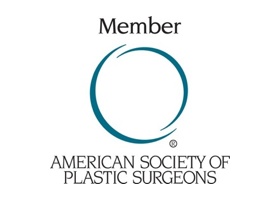
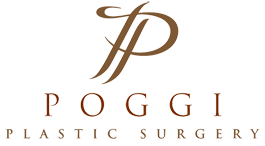 3510 N. Ridge Rd, Suite 100
3510 N. Ridge Rd, Suite 100